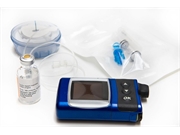Adults using intermittently scanned continuous glucose monitoring also report less work absenteeism
FRIDAY, Jan. 3, 2020 (HealthDay News) — Intermittently scanned continuous glucose monitoring (isCGM) results in higher treatment satisfaction among adults with type 1 diabetes, according to a study published online Dec. 24 in Diabetes Care.
Sara Charleer, from University Hospitals Leuven-KU Leuven in Belgium, and colleagues investigated the impact of isCGM on quality of life and glycemic control among 1,913 adult patients with type 1 diabetes during a 12-month period.
The researchers found that general and diabetes-specific quality of life was high at baseline and remained stable, while treatment satisfaction improved during the study period. While rare in the year before the study, admissions for severe hypoglycemia and/or ketoacidosis further decreased (3.3 to 2.2 percent). Fewer people also reported severe hypoglycemic events (14.6 versus 7.8 percent) or hypoglycemic comas (2.7 versus 1.1 percent) while maintaining hemoglobin A1c (HbA1c) levels. Participants reported fewer absences from work (5.8 versus 2.9 percent), but 11 percent of participants experienced skin reactions, leading 1 percent of participants to stop isCGM.
“Nationwide unrestricted reimbursement of isCGM in people with type 1 diabetes treated in specialist diabetes centers results in higher treatment satisfaction, less severe hypoglycemia, and less work absenteeism, while maintaining quality of life and HbA1c,” the authors write.
Several authors disclosed financial ties to the medical device and pharmaceutical industries.
Copyright © 2020 HealthDay. All rights reserved.








